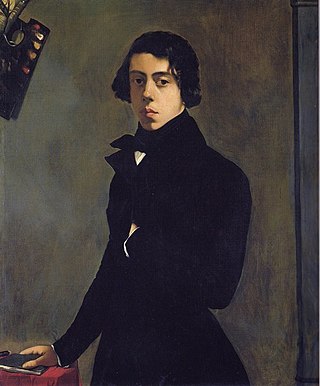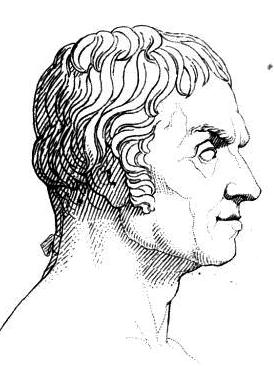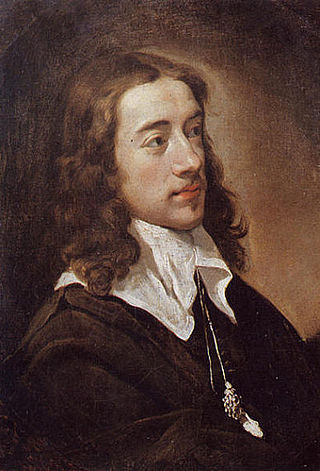This article needs additional citations for verification .(April 2022) |


Jean-Baptiste Mauzaisse (1 November 1784, Corbeil - 15 November 1844, Paris) was a French painter and lithographer; specializing in battle scenes and portraits.
This article needs additional citations for verification .(April 2022) |


Jean-Baptiste Mauzaisse (1 November 1784, Corbeil - 15 November 1844, Paris) was a French painter and lithographer; specializing in battle scenes and portraits.
He came from a modest background. His father was the organist at Corbeil Cathedral, and could not afford to pay for Jean-Baptiste's studies. At the age of nineteen, he left home and was able to find a position in the studios of François-André Vincent, at the École des Beaux-Arts in Paris. His début at the Salon came in 1808, and he obtained a first-class gold medal there in 1812, for Arab Lamenting the Death of His Courser. [1]
Many of his commissions were for the government, often in collaboration with other artists. These included decorating the apartments of King Louis XVIII, the figures of Prometheus and Tantalus for the Musée de Picardie in Amiens (1819), and several plafonds at the Louvre (1822), in what is now known as the "Salle des Bijoux". These feature figures representing Science, Art, Commerce, and War, as well as the four seasons. [1] For his work there, he was named a Knight in the Legion of Honor in 1823.
He also created decorations for two cathedrals, the Cathédrale Saint-Étienne de Bourges, and the Cathédrale Saint-Pierre-et-Saint-Paul de Nantes. In 1837, he received a personal commission from Louis-Philippe, to portray him at the Battle of Valmy.
A significant number of his works are in private collections. In addition to those at the Louvre, some may be seen at the Metropolitan Museum of Art in New York.

Paul Dubois was a French sculptor and painter from Nogent-sur-Seine. His works were mainly sculptures and statues, and he was also a portrait painter.

Théodore Chassériau was a Dominican-born French Romantic painter noted for his portraits, historical and religious paintings, allegorical murals, and Orientalist images inspired by his travels to Algeria. Early in his career he painted in a Neoclassical style close to that of his teacher Jean-Auguste-Dominique Ingres, but in his later works he was strongly influenced by the Romantic style of Eugène Delacroix. He was a prolific draftsman, and made a suite of prints to illustrate Shakespeare's Othello. The portrait he painted at the age of 15 of Prosper Marilhat, makes Théodore Chassériau the youngest painter exhibited at the Louvre museum.

Étienne Le Hongre was a French sculptor, part of the team that worked for the Bâtiments du Roi at Versailles. Le Hongre was one of the first generation of sculptors formed by the precepts of the Académie royale de peinture et de sculpture. At the Bain des Nymphes (1678–80) he was one of the sculptors providing lead bas-reliefs for the fountain setting that featured the work of François Girardon. Le Hongre provided other bronze figures for the Parterre d'Eau.

Aimé Nicolas Morot was a French painter and sculptor in the Academic Art style.
Michel Laclotte was a French art historian and museum director, specialising in 14th and 15th century Italian and French painting.

Louis-Pierre Deseine (1749–1822) was a French sculptor, who was born and died in Paris. He is known above all for his portrait busts and imaginary portraits.

Elisabeth Henriette Marthe Lorimier was a popular portraitist in Paris at the beginning of Romanticism.

Jean-Guillaume Moitte was a French sculptor.

Marcel Aubert was a French art historian.

Robert Jacques François Faust Lefèvre was a French painter of portraits, history paintings and religious paintings. He was heavily influenced by Jacques-Louis David and his style is reminiscent of the antique.

Normandy Thatched Cottage, Old Trouville is an oil painting by French artist Paul Huet. It is currently on display at the Musée du Louvre in Paris.

The Laundress is an oil-on-panel painted by French artist Honoré Daumier in 1863. It is exhibited at the Musée d'Orsay in Paris. The subject of laundresses, also known as washerwomen, was a popular one in art, especially in France.
Jean-Charles Tardieu, also called "Tardieu-Cochin" was a successful French painter during the ages of Napoleon and of the Bourbon Restoration. His work was primarily historical, but also included landscapes, portraits and religious subjects.

Jean-Baptiste-Antoine Guillemet was a French renowned landscape painter and longtime Jury member of the Salon des Artistes Francais. He was one of the first 19th-century artists to paint modern life, and a pivotal figure in the transition from Realism to Impressionism.

Eugène Louis Millet was a French architect. He planned and began the restoration of the Château de Saint-Germain-en-Laye, home of the Museum of National Antiquities.

Louis Testelin (1615-1655) was a French painter.

Portrait of Marguerite de Conflans is a c.1876 oval oil on canvas portrait by the French painter Édouard Manet. It is owned by the Musée d’Orsay, though it is on display in the red salon at the Musée des Augustins in Toulouse. Like A Bar at the Folies-Bergère, the work mimics Ingres in its use of a mirror to show the figure from several angles, a motif rarely used by Manet.

Mountainous Landscape with a Bridge and Four Horsemen is an oil painting on canvas by the Flemish landscapist Joos de Momper. Its date of execution is unknown. The painting is kept in the Louvre in Paris.

The Cathedral of Chartres is an oil painting on canvas of Chartres Cathedral by the French artist Jean-Baptiste-Camille Corot, created in 1830. After being sold several times, it has been held in the Musée du Louvre, in Paris since 1906.
![]() Media related to Jean-Baptiste Mauzaisse at Wikimedia Commons
Media related to Jean-Baptiste Mauzaisse at Wikimedia Commons